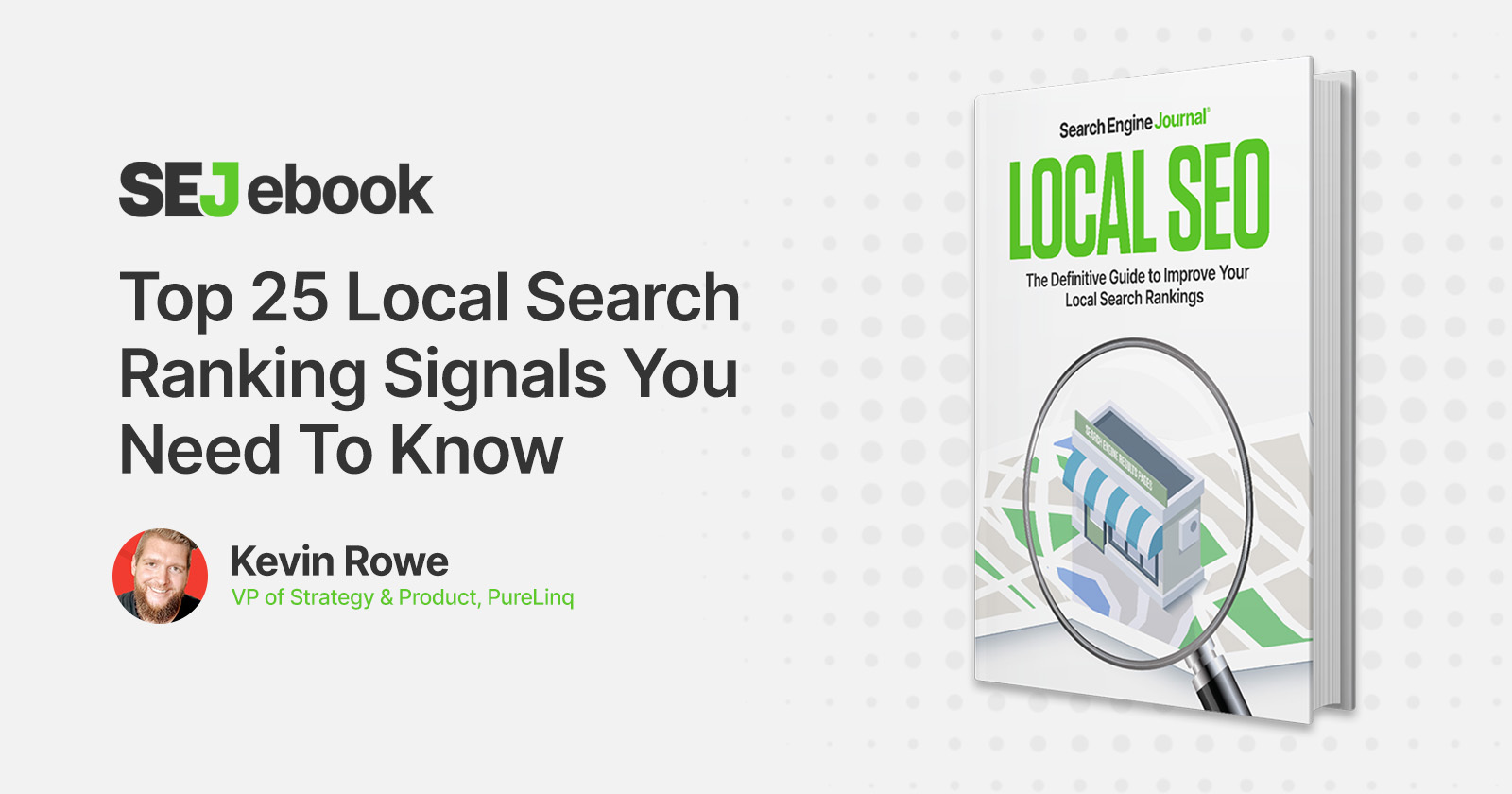5 Tips & Best Practices For Marketplace Ecommerce Sellers via @sejournal, @krisjonescom
These 5 best practices will help you to give yourself the best chance of doing well on Amazon Marketplace. The post 5 Tips & Best Practices For Marketplace Ecommerce Sellers appeared first on Search Engine Journal.

It’s difficult enough to make it as an ecommerce seller on the Amazon Marketplace when you know what you’re doing; it’s a competitive platform.
But if you don’t have a firm grasp on how to set yourself apart from other sellers, finding success on Amazon Marketplace can be quite challenging.
The truth is, optimizing your third-party Amazon Marketplace ecommerce store is a worthwhile endeavor; the Amazon Marketplace generated $117.7 billion in fiscal year 2022.
If you want a piece of that, you have to set your store apart from all the rest – and that involves understanding and employing the best practices of third-party selling on Amazon.
No one can deny that it can be time-consuming and take a lot of work to succeed on the platform, but employing these tips will give you the best chance of rising above mediocrity and reaching the customers who really matter to you.
So, if Amazon Marketplace success has long been eluding you, check out this listicle of the five best tips and practices for Marketplace ecommerce sellers.
1. Write Masterful Product Descriptions
As in every form of ecommerce, Amazon Marketplace ecommerce involves some degree of content marketing. In this case, it’s all about writing the best product descriptions that customers have ever seen.
This makes sense on multiple levels.
Practically speaking, customers need as much detail as you can give them about what you’re selling and how it differs from competing products.
The most comprehensive and detailed product descriptions address that need, covering everything from the product’s model and serial number to every feature that comes as part of the package.
Also, SEO-optimized product descriptions – that is, descriptions that use relevant Amazon-based keywords – have a better chance of ranking in Amazon’s search results and getting found by the customers you want.
You can actually perform keyword research on Amazon by starting a search query and seeing what the algorithm predicts to come next.
Or, complete an actual search and look at the first set of products. If they are ranking where you want your competing products to rank, have a look at their listings to see what they’re doing right. It’s a good chance to lift some keywords and employ them in your own listings.
However you want to go about the keyword portion of this, always ensure your product descriptions give users as much information as possible – because the most useful ones are the ones with the best chances of ranking well on Amazon.
2. Focus On Building Reviews
As with local Google Business Profiles, Amazon product reviews go a long way toward showing the Amazon algorithm that customers like what you’re selling.
Similar to the descriptive product listings above, positive product reviews make sense on two levels on the Amazon Marketplace.
For one thing, the algorithm will naturally prioritize products with a lot of positive reviews over ones with one-star reviews. That’s just all about the user experience on the platform.
Think about it logically: If Amazon wants to sell more products to more customers, it will show product results that historically have performed well with real users.
So, five-star reviews work for Amazon’s A9 algorithm (the one responsible for product rankings), but they also make an impression on human customers. Very few people will buy a product they’ve never seen before if they see it has an average customer rating of only one or two stars.
Those types of poorly rated products exist on Amazon, and they’re usually punctuated with customer reviews warning others to stay far away.
You will rank higher on Amazon’s results pages if you have an average customer rating of 4.5 stars or more and plenty of sales. Sales will come in time if you do everything else right.
In the meantime, you can work to get a review on every item you sell on the Amazon Marketplace.
The easiest way to do it is to use the Request a Review button in Seller Central. Amazon will send an automated email to the buyer asking for a review and rating. To keep with Amazon’s policies around asking for customer reviews, this button is only available between 5 and 30 days after the product is delivered.
3. Invest In High-Quality Photos
If you’re a Marketplace seller, this third point should already be on your mind: use only the best, highest-quality photos of your products.
If everything else between you and your competitors is equal, and you don’t use product images in your listings, you won’t be able to outrank them.
Think about your own time using Amazon to shop for things. The default product photo is the first thing you see about a listing, before you even read a word of the product description. So images are vital if you really want to sell things to people.
Just ensure the images are high resolution and show the product in all possible detail. This will allow customers to zoom in on the products and see what they want up close.
Another quick tip is to get photos of the product being used in its intended environment. This could apply to almost anything you sell. If it’s a stereo system, show it sitting on a shelf with the speakers on either side.
Or maybe you’re selling a garden hose and reel. Have one of the high-quality images show the hose in a backyard wound around the reel.
Adding images to your product listings is a no-brainer, but if you’ve derived any additional pro tips from this section, that’s already another win for you.
4. Don’t Try To Be Too Unique With Your Pricing
One issue of the Amazon Marketplace that’s a fascinating area of study is how to price your products.
As in other business venues, go too high, and you’ll price yourself out of vital customer business; too low, and you might get more business, but you won’t turn much profit.
The answer to the question of Amazon Marketplace pricing is essentially to be boring about it: go somewhere in the middle of all your competition while still making sure you’re earning the profit margin you want.
You know from your own business workings how much you need to make on a sale to break even. Once you have that number, you’re in a good spot, but you’re not done yet.
You then have to know the percentage of profit you want to make. This can be difficult because, for one thing, it will be different for everyone, and for another, you may need to learn how to judge this against what you think your customers will pay.
Here again, I can direct you to your competition on the Amazon Marketplace.
Maybe you manufacture and sell turntables. If a competitor is selling a turntable with roughly the same features and capabilities, and the price of their models doesn’t exceed $300, you may be off-base in charging $550 for yours.
Remember that the products are almost identical; there is something to be said for charging the customer more for a better-quality product, but you just couldn’t justify two brands of the same product having such a large cost discrepancy.
With Amazon specifically, you’re already paying to sell your products on the platform. You pay even more if you opt for Fulfillment by Amazon.
Those fees already add more to your cost, and you would have to work them into whatever prices you ultimately determine for your products.
In the end, pricing on Amazon comes down to a few things:
Your costs of doing business. Your competitors’ prices. The profit margin you want to make.Don’t go crazy with pricing; just make sure your price is fair for the product you’re selling, and try to be somewhat in line with similar products already on offer.
5. Put Effort Into Customer Service
Finally, if you’ve been treating customer service lightly in your Amazon store, it’s time to revamp your whole approach.
Customers respond to sellers who appear to take their concerns seriously, and there are some concrete steps you can take to be a good business and do exactly that.
First of all, on your Amazon product pages, you can directly answer questions that customers ask about your offerings. This is the perfect opportunity to convert additional customers by laying out even more information you may have yet to include in the product description.
It’s also a chance to communicate directly with people who are thinking of buying your product!
By answering these questions, you are accomplishing two goals at once: offering more information that could lead to a sale, and demonstrating that you’re a company that knows how to talk to customers in a helpful and professional way.
The other major step you can take in the realm of customer service is to respond to negative product reviews by verified customers.
Now, if you’re currently a seller on Amazon, you know the company removed the ability to comment on product reviews quite a while back. Sellers aren’t totally without options, though. For sellers, review comments have been replaced with Contact Customer.
This is an automated feature of the Amazon Marketplace where sellers can contact customers who have bought their products but left negative reviews on the product page.
In this context, negative reviews refer to ones with star ratings between one and three.
To prevent any kind of inappropriate solicitation of a review change, though, the Contact Customer feature uses a series of email templates to address negative reviews.
In the initial email, sellers can offer customer support by inquiring for more information from the customer or simply offer a full refund.
In any case, the Contact Customer feature is your best avenue to dealing with negative Amazon reviews.
Even though all this happens privately between sellers and buyers, it could still positively affect your product’s rating – since customers can, but don’t have to, change their review after you resolve the issue.
The point is that excellent service could have a real impact on your overall Amazon seller profile, so don’t neglect it.
Summary
Amazon Marketplace can be a lucrative platform for ecommerce sellers, but it’s also a crowded space, and reaching your target consumer is easier said than done.
Chances are that you won’t achieve booming success by simply signing up and listing your products.
Instead, try employing some of these tips and best practices to optimize your presence on Amazon Marketplace and get the edge on your competition.
It might take a little time and effort, but the results will be well worth it!
More resources:
Amazon SEO: A Comprehensive Guide For Sellers How To Use Amazon Hidden Keywords To Increase Product Discoverability Ecommerce Marketing: The Definitive GuideFeatured Image: Surasak_Ch/Shutterstock

 Troov
Troov 







![How I Built 5,660 Backlinks in 30 Days [New Strategy]](https://api.backlinko.com/app/uploads/2022/04/how-i-built-5660-backlinks-in-30-days.png)
























